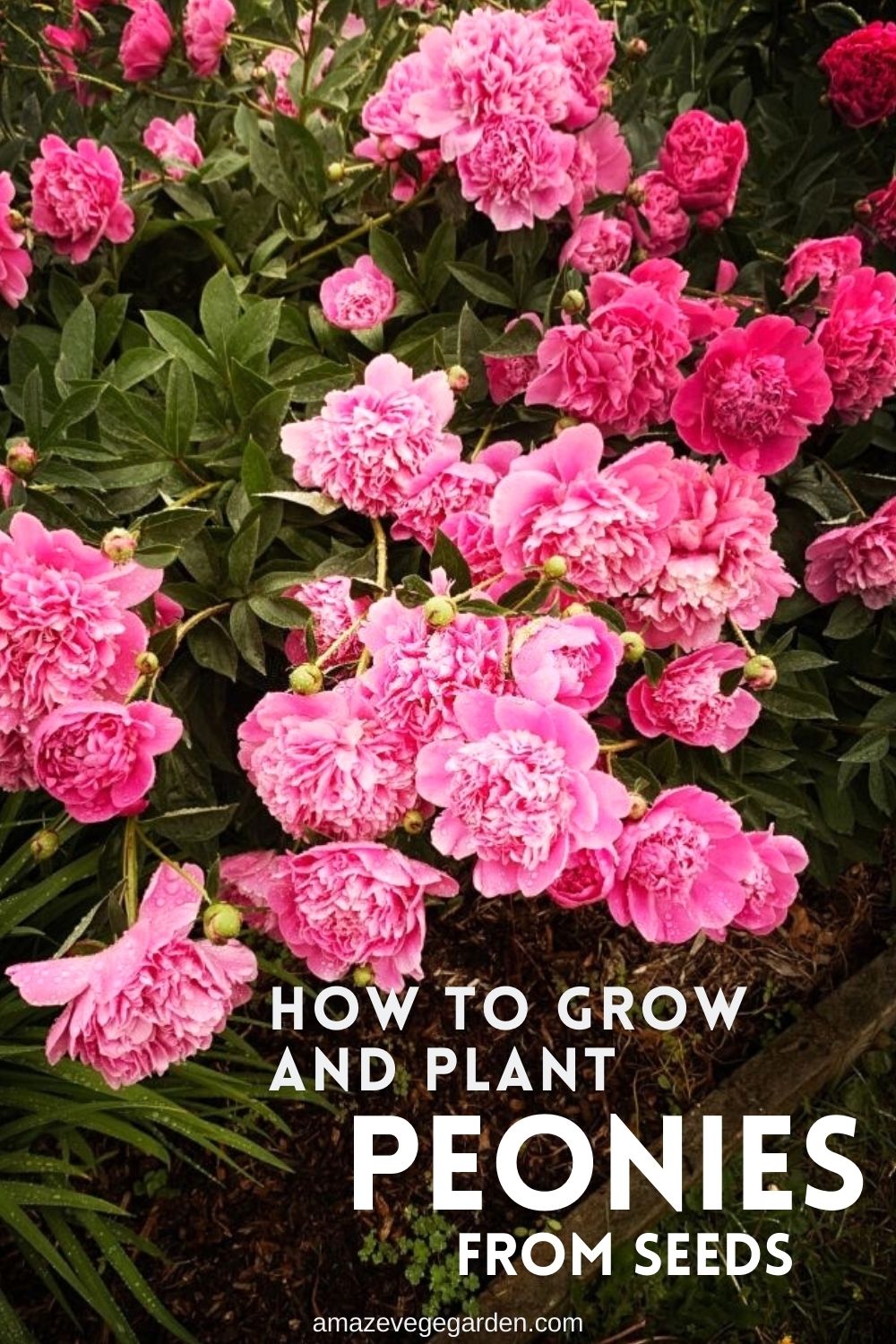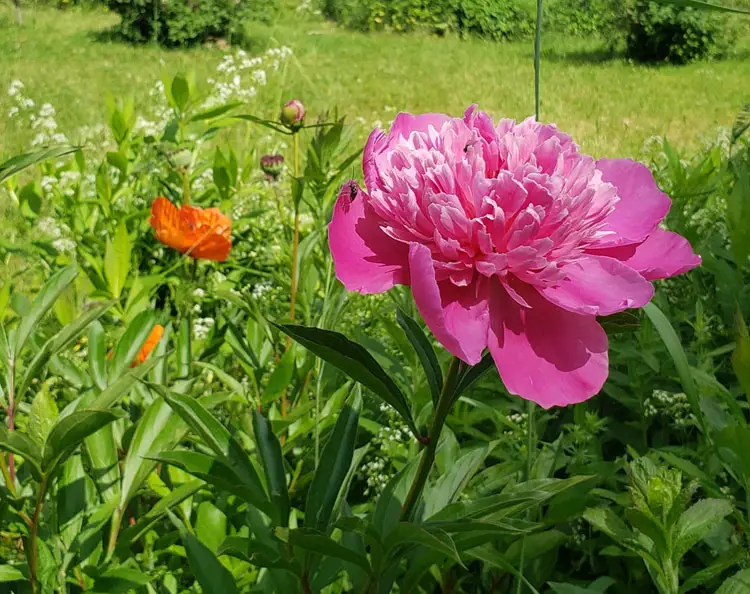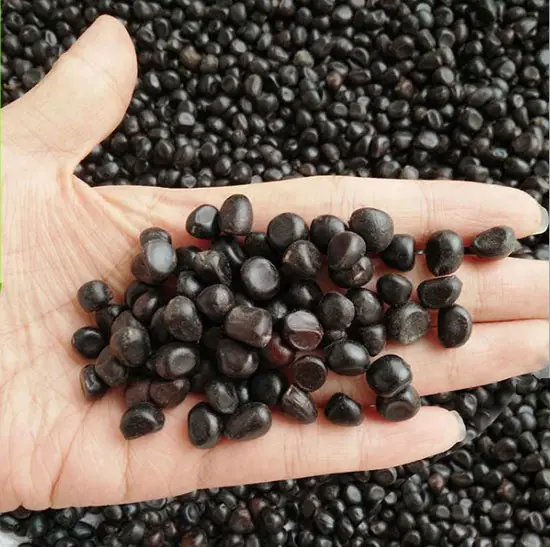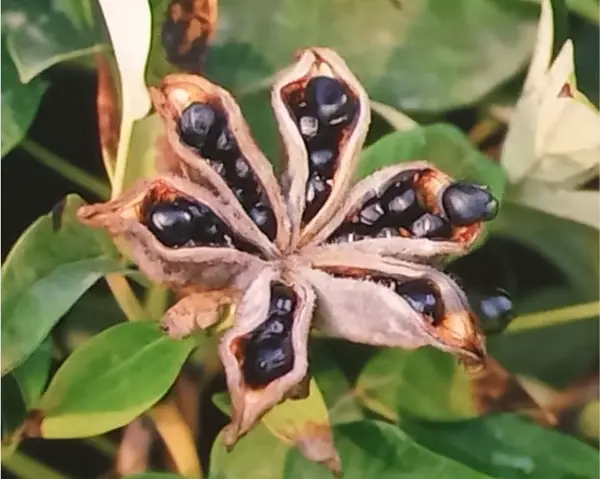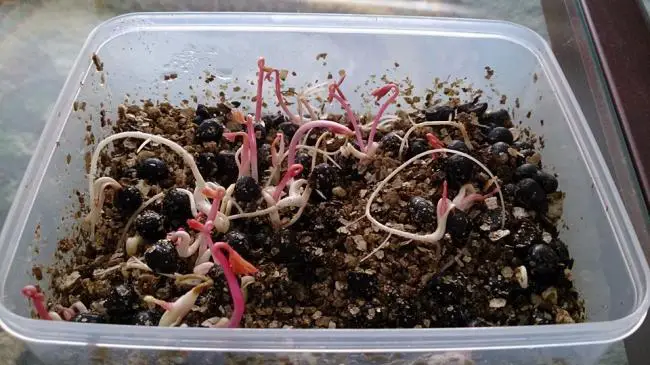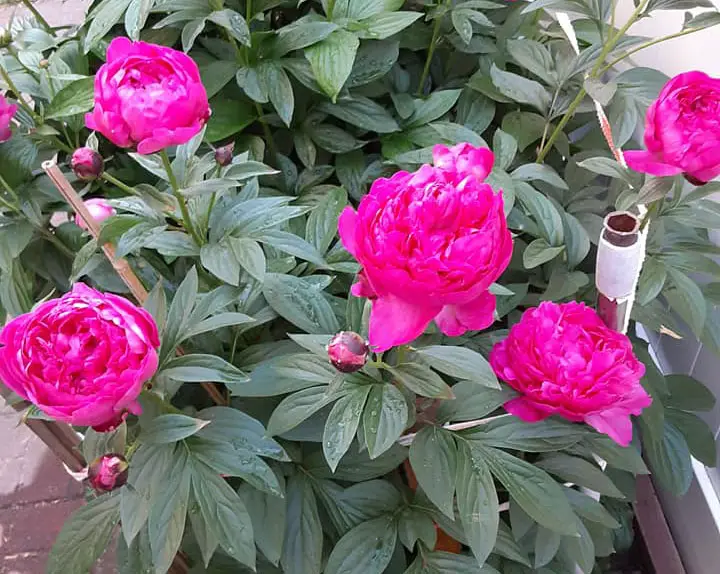Peonies are some of the most beautiful flowers that can be grown in a garden. They come in a variety of colors, sizes and shapes, making them an excellent addition to any home or outdoor space. But did you know that it’s not just possible, but relatively easy to grow peonies from seeds?
Growing plants from seed is a rewarding experience for all skill levels; however, growing peonies from seed does require patience and proper technique. Luckily, with our tips and tricks you’ll have everything you need to get started on your very own peony project. We’ll take you through each step of the process – from sowing the seeds to harvesting those gorgeous blooms.
Whether you’re looking for something new to try out in your gardening journey or simply want to add more color and life around your property – growing peonies from seed is an adventure worth taking.
Best Time To Plant Peonies
It’s time to get your hands dirty and start planting peonies for a beautiful garden. The best time to plant your seeds is in the fall, as it gives them enough time to germinate before winter. Late October and November are the ideal months for transplanting and adding new varieties to your garden. As with all plants, you must consider the climate and soil conditions of where you’re planning on growing them. If you live in a colder region, aim to plant earlier so that they have some growth early on and can survive freezing temperatures come wintertime.
If plants are purchased in pots in spring and do not have a good root system, plunge pots into the ground, keep them well watered and plant out in the final position the following October.
For those living in warmer climates, however, planting later may be beneficial as this will give the seedlings more time to become established before the hot summer months arrive. Regardless of when you choose to plant them, make sure that the soil temperature is at least 60 degrees Fahrenheit (15-16 Celsius) before sowing your seeds. This will ensure successful germination and provide optimal results for healthy flowering plants.
So if you’re ready for the journey ahead — one full of patience and care — then let’s move on from ‘when’ to ‘where’.
Where To Get The Seeds?
To germinate tree peony seeds, of course, first, you must get yourself some seeds. If you are wondering where you can get them, well, it is not as hard as last time. You can get them from your nearby garden store, or you can buy them online from Amazon or Etsy.
Here are a few other ways to source them:
- Purchase from an online nursery – Many nurseries sell packets of peony seeds for purchase. It’s important to ensure the packet has been stored in cool temperatures and away from moisture.
- Order from a seed exchange – These exchanges offer rare varieties that may not be available through regular retail outlets. They also allow you to trade with other gardeners who have extra seeds they don’t need.
- Harvest your own – If you know someone who grows peonies, ask if you can collect some of their fallen petals or heads after the blooming season ends and save the viable seed inside for planting later on in springtime.
- Gather wild specimens** – You can often find peonies growing naturally in woodlands, meadows, and along roadsides where they’ve escaped cultivation or spread by birds or wildlife over time. Collecting these wild specimens is a great way to get unique types of peonies that would otherwise be unavailable elsewhere.
If you wonder what peony seeds look like, The seed pods and the seed are large. You can see them easily as the shape is unique. You will be able to see them right away on the plant.
Initially, they are green, and as they ripen, their color will turn darker brown. After some time, they will crack open. The best time for you to collect the seeds is when they crack open.
Germinating Peony Seeds
Although starting a garden from scratch requires patience and dedication, with some effort and attention to detail, you can be rewarded with beautiful blooms in no time at all.
When you are ready to begin planting your peony seeds, there are several steps that should be taken first. First off, you’ll need to select a potting soil mix specifically designed for growing flowers or vegetables. This will ensure that the soil has enough nutrients for optimal growth of your plants. You will also want to make sure that the soil has good drainage properties so that any excess water does not drown out your seedlings.
Once you have selected an appropriate potting mix, fill up the pots about three-quarters full with soil and then place the peony seeds on top. Gently press down on each seed until it is slightly covered by the soil; however, do not bury them too deep as this could impede their ability to sprout later on.
Next, cover each pot with plastic wrap or another type of material such as newspaper or burlap sack which helps hold in moisture while allowing air flow to reach the soil and keep it moist throughout the day. Place your potted peonies in an area where they will receive partial shade during warm days but direct sunlight during cooler times – think east-facing windowsills or sheltered outdoor spots like patios or decks.
Be sure to check regularly for signs of germination (germ rate), usually within two weeks after sowing – if nothing happens within a month’s time consider re-planting new batches of fresh seeds into new pots filled with freshly prepped soils.
If you are buying the seeds, you will already take them out of the seed pods. However, if you get some peony seed pods, you can wait for them to dry out, and they will open and release their seeds.
It can be tricky to germinate the seeds, especially if they’ve got the black seed, which means they are dormant. It may take more than 2 years to germinate.
Do You Need to Soak Your Peony Seeds Before Planting?
You can use a technique to break the dormancy down and make the peonies germinate faster. What you can do is take some seeds and soak them in hot water.
The hot water should be at about 60-70 degrees. You can soak them for about 5-10 minutes to see if that breaks the seeds’ dormancy. Hot water treatment is quite a common way for certain plant to break down their seed coat. Another technique you can use is to break the seed coat because the seed coat is very hard.
Water will not be able to get into the seed. You can get a sander and scratch the seed coat down. When you scratch the seed coat, you need to be careful to scratch it gently and slowly to ensure the seed coat won’t do any harm to the seed inside.
It can be quite damaging when you get into the deeper part of the seed where you got the embryo and the food stalk. So make sure you won’t go too far for this. It would help if you stopped when you see some slightly lighter material underneath. Then soak them in hot water as well.
Prepare a container with some tissue paper. Place the tissue papers on the container. Then soak the tissue papers in water to make them moist. Get the seeds out from the hot water after soaking them for 5-10 minutes and place them on the tissue papers inside the container. Cover up the container with the lid.
Put them in a warm location and wait for them to start sprouting. It is good for you to put them into a pot and place them outside to get full sunlight.
Can Peonies Grow in Pots?
Peonies can grow in pots without any issues. However, it is ideal for getting a larger pot as peonies need more space to grow. Once you get a pot, you can fill it with potting mix. The ratio of your potting mix should be 1/3 topsoil, 1/3 compost, and 1/3 coconut fiber. You can also replace coconut fiber with peat moss.
But do remember that peat moss is very acidic. To dilute the acidic effect, you would want to add a little extra lime to it to raise the pH. The ideal pH to grow peonies is about 6.5-7.0.
Take the seeds and put them into the soil. Use your hand to push the seed down to the soil at about 1.5 inches to 2 inches. Keep the space of each seed at about 3 to 4 inches apart. Pat the soil firmly. Water deeply and put the pot in a shaded location so that the pot won’t dry out too quickly.
You will also want to sink the pot in the ground where you can dig a hole and put the pot into the hole of the ground. You need to make sure the plant won’t dry out, and also, it doesn’t freeze when winter is coming.
What you can do is place the plant into the hole and spread the roots out. Carefully fill the hole and when the hole is two-thirds full with earth, give the plant a little shake to distribute the soil around the roots, then continue to fill the hole. Firm the plant in and water the soil.
It can take anywhere from 2-4 months for peony seeds to germinate. This is an exciting time, as it marks the start of a journey into gardening and horticulture.
The process of germination involves several steps:
- The seed must absorb water.
- Peonies need consistent moisture during their first few weeks of growth; they should be watered regularly when dry.
- A warm and humid environment will help speed up absorption.
- The seed coat needs to break open.
- Depending on the species, this can range in complexity – some may require stratification or scarification.
- Once exposed, the embryo enters its active growing stage.
As you nurture your new plants through these stages, you’ll find that patience pays off. With proper care and conditions, peonies are resilient and will thrive in gardens both large and small. As with any endeavor worth doing, success begins with taking the time to understand the basics before diving into implementation.
How To Propagate Peonies From Seed
Gardening and horticulture enthusiasts are often delighted to discover the beauty of propagating peonies from seed. Peony seeds are usually germinated in the spring, making it a great way to bring on the new blooming season with added seasonal color. To get started with peony propagation, gather up some fresh peony seed pods.
Once you have your pods, open them carefully and separate out the seeds. The best way to go about this is by using a sieve or screen; any material that can be used as a barrier between small seeds and larger debris will do just fine. After discarding all unwanted materials, place your clean seeds into an airtight container and store them at room temperature until they’re ready for planting.
When selecting where to plant your peony seeds, remember that these plants prefer full sun exposure and well-draining soil. Once you’ve chosen an appropriate area, lightly water it before laying down your prepared beds of topsoil. Then scatter the cleaned peony seeds across the surface of the bedding and cover them with no more than one-eighth inch of additional dirt or compost.
Harvesting Peony Seed Pods
Peony seed pods are a valuable source of new plants and should be harvested when the flowers fade. To harvest them, you must wait until late summer or early autumn after the petals have fallen off. The seeds will begin to swell inside their protective husks as they mature, so it’s important to keep an eye on them during this time. Once fully ripe, each pod will split open and reveal its treasure trove of dark-colored peony seeds.
You can collect the seed pods with your hands but be sure not to squeeze too hard or else you may damage the delicate seeds inside. If possible, wear gloves while harvesting to protect both yourself and the fragile contents of the pods. It’s also helpful to use a pair of scissors in order to clip through any thicker stems that hold the pods in place.
When collecting peony seed pods, make sure you separate out any immature ones from those that are ready for harvesting. This way, you can ensure you get only viable seeds for planting later on down the line.
Transplanting Peonies
With the harvesting of peony seed pods complete, it is now time to prepare for transplanting. Transplanting peonies requires careful planning and attention to detail if they are going to reach their full potential in a new location. To ensure successful transplants, there are several measures that must be taken “before you dig” as well as during and after planting.
Before you start digging up your peonies, you should check with your local climate zone to make sure growing conditions will suit them. Peonies need good drainage, plenty of sunlight, and an area where temperatures do not drop below -50 degrees Fahrenheit. If any of these conditions cannot be met at the proposed site, then transplanting should not take place until further research has been done or alternative sites have been explored.
When the ideal soil location has been found for your newly harvested peony seedlings, it’s time to get busy. The first step is preparing the soil by adding organic matter such as compost or manure so that water can drain properly from the roots of the plants. Once this is done, carefully lift each plant out of its old home and gently replant it into its new one; making sure to keep enough space between each one while giving special care to keeping the roots spread out evenly around the hole before backfilling with soil.
Finally, give them some extra TLC by watering thoroughly once planted and mulching liberally for added protection against extreme weather changes. With these steps completed properly, you’re on your way toward seeing beautiful peonies blooming in no time.
Did you find this post useful? Would you like to get back to it later? Save THIS PIN below to your best gardening and flower boards on Pinterest! Thanks 🙂
